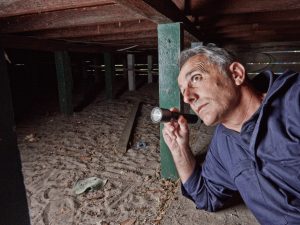
Understanding Chemical Delignification in Building Inspections
Chemical delignification is a significant issue often overlooked by homeowners or vendors, primarily because the affected timber is usually hidden within the structure or roof cavity. This problem can be a major structural defect, posing a serious risk of building failure, including potential roof collapse. When detected, a Structural Engineer should be consulted to assess the full extent of the damage.
What is Chemical Delignification?
Chemical delignification is the breakdown of lignin, a key component of timber that provides its tensile and compressive strength. When lignin deteriorates, the timber becomes weaker, compromising the structural integrity of the building. This condition is often identified during pre purchase building inspections or timber pest inspections.
According to AS4349.1 (Inspection of Residential Buildings – Pre Purchase), a major defect includes any significant deterioration that impacts the property’s structural integrity. Chemical delignification fits this description when it weakens the connections within the structure, such as the nails or wire ties that fasten roof tiles to the battens.
Where is Chemical Delignification Found?
Chemical delignification typically affects timber roof battens, which may appear “hairy” when the condition is present. This issue is usually discovered within the roof void or loft space during home inspections. The timber battens, which connect to rafters, are particularly vulnerable due to their position and size within the roof space. If left unchecked, the roof could fail or collapse before significant delignification occurs in the main timber wall frame.
While chemical delignification is more common in timbers with weak durability, even durable timbers can be affected. The process of delignification can take years to progress to the point of collapse, but it is often well advanced by the time it is identified, making failure unpredictable or imminent.
Common Factors Contributing to Chemical Delignification
Several environmental factors can accelerate the delignification process:
- Proximity to the sea: Exposure to salty air can chemically affect wood grains, leading to delignification.
- Vehicular pollution: Homes near arterial roads are exposed to pollution that can cause fibre disintegration in timber.
- Industrial areas: Structures near factories or chemical plants may suffer from delignification due to fumes and pollutants.
- Older homes: Historic homes with fireplaces, chimneys, or slow combustion stoves may experience delignification due to residual effects from past heating practices.
Importance of Early Detection
Identifying chemical delignification during pre purchase building inspections is crucial, as it is considered a major structural defect. If the structure is compromised, particularly if the roof is at risk of collapse, immediate action is required. A Structural Engineer should be called in to evaluate the damage and recommend repairs.
Chemical Delignification as a Timber Pest
In the context of a timber pest inspection, chemical delignification is classified as a structural timber pest, similar to termites. This chemical breakdown of lignin significantly impacts the strength and stability of the timber, making early detection and intervention vital for the safety and longevity of the property.
By understanding and addressing chemical delignification, you can ensure the structural integrity of your home or investment property, preventing costly repairs and potential safety hazards down the line.




